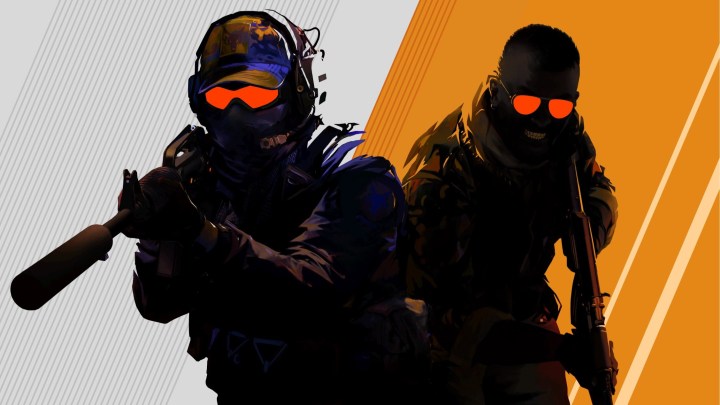
Maximizing your performance in Counter-Strike: Global Offensive is a great way to improve how competitive you are. Frames win games, as Nvidia loves to say, and though it’s not quite that linear, you can certainly reduce your input lag by improving the game’s frame rate. That might give you that split-second reaction time advantage that you need to pull off the win.
But which settings should you tweak, and what kind of performance hit do the prettiest of settings give you? That’s what we’re looking at here, in our CS:GO performance guide.

The best settings for CS:GO
CS:GO is not a new game, so if you have a modern gaming PC and don’t care too much about the specifics of performance, just set the resolution to your monitor’s native resolution, leave everything on Auto and call it a day. If you’re more interested in min-maxing your way to a more responsive gaming experience, here are our favorite settings.
Resolution: 1,920 x 1,080 or 2,560 x 1,440
This setting has one of the larger impacts on your performance and in-game visual acuity. While there are some competitive players who lower the resolution to as little as 1,024 x 768 to push their frames per second (fps) as high as possible and their frame time as low as it’ll go, that’s not for me. Playing at your monitor’s native resolution will give you the best picture quality, but 1080p will give you better performance with lower frame times and higher frame rates.
Why might you opt for 1440p over 1080p then? I found the added visual acuity at a distance useful. Playing at super-low resolutions might improve fps, but being able to see your opponents clearly across the map can make a big difference. Few professional or streaming players employ this, but some do. Your mileage will vary, and it’s a setting that will benefit those with higher-powered graphics cards more — since their fps won’t be as impacted — but it’s worth considering for anyone with a 1440p display.
- Display Mode: Full screen
- Laptop Power Savings: Disabled
- Global Shadow Quality: Low
- Model/Texture Detail: Medium
- Texture Streaming: Enabled
- Effect Detail: Low
- Shader Detail: Low
- Boost Player Contrast: Enabled
- Multicore Rendering: Enabled
- Multisampling Anti-Aliasing Mode: None
- FXAA Anti-Aliasing: Disabled
- Texture Filtering Mode: Bilinear
- Wait for Vertical Sync: Disabled
- Motion Blur: Disabled
- Triple-Monitor Mode: Disabled
- Use Uber Shaders: Enabled
These settings were initially optimized using our best practices for PC graphics guide before I made specific adjustments for this game.
Since CS:GO is primarily a competitive title, I dropped almost every setting to its lowest to boost performance. What I didn’t want to do was overly inhibit my ability to accurately see my enemies, though. That’s why I kept Model/Texture detail at medium, and kept Boost Player Contrast enabled. Since Uber Shaders can help avoid hitching, I left that enabled too.

The lack of anti-aliasing was the only real setting I noticed a big visual difference with. Everything else just looks marginally worse, with a lower-contrast scene with weaker shadows and lower texture quality. I didn’t find this hurt me on a competitive level, although I might be willing to sacrifice a little performance for some anti-aliasing. That’s largely personal preference, though, and something I would grow to ignore with more playtime.
CS:GO system requirements
Counter Strike: Global Offensive is an old game. It released on Windows in August 2012, and though Valve has updated it a lot over the past decade, it’s not a demanding game in 2023. The latest minimum system requirements from Valve are:
Processor: Intel Core 2 Duo E6600 or AMD Phenom X3 8750 processor or better
Memory: 2 GB RAM
Graphics: Any GPU with 256 MB or more and DirectX 9-compatibility
Storage: 15 GB
That’s something that most kid-friendly tablets could manage in 2023. Any gaming PC built in the past decade will be able to play CS:GO, but what do you need to play it well?
In our testing, we found CS:GO would take advantage of up to 10 CPU threads on various maps, so you’ll want at least a six-core CPU with simultaneous multi-threading/hyperthreading to make sure that you always have enough threads handy. Higher clock speeds help too, and the newer 3D VCache CPUs from AMD have shown themselves to be excellent performers in most games, CS:GO included.
For the best performance in CS:GO, the current best processors are the AMD 7800X3D and Intel Core i9-13900K. They’re overkill for a game like this, but if you want the highest frame rates, they’re the best tools for the job. For a more modest build with excellent performance, the AMD Ryzen 5800X3D and Intel Core i5-12600K are still awesome gaming CPUs.
As for graphics cards, anything newer and better than a GTX 1650 is going to be enough to play this game comfortably. For higher fps to make you that bit more competitive, newer GPUs like the RTX 3060 and RX 6600 are more than enough to play this at high fps at 1080p. If you want to play at 1440p without so big of a visual hit, any graphics card better than those will do you just fine.
CS:GO benchmarks tested
There wasn’t a huge variation in performance with the different CS:GO settings, but we ran a few benchmarks as part of our performance testing to see what effect different settings had. Testing was conducted over a period of 10 minutes on the Dust II map.
We used the following test system to record frame rates and times:
- CPU: AMD Ryzen 5700X
- Motherboard: ASrock B450M Pro4
- Graphics card: AMD RX 7900 XT
- Memory: 32GB Kingston Fury Beast 3200MHz
We tested CS:GO with our chosen settings at both 1440p and 1080p resolution, as well as with all the settings maxed out for those who want the ultimate visual CS:GO experience. Motion blur and vertical sync were disabled in all tests.
| Average fps | Average frame time | |
| 1440p max settings | 301 | 3.54ms |
| 1440p chosen settings | 322 | 3.21ms |
| 1080p chosen settings | 341 | 2.89ms |
As you can see, there wasn’t a huge variation between the different settings due to how easy it is to run CS:GO. Different maps can produce different results, too, with the more demanding and visually exciting ones leading to a greater variation in some cases.
These results do show that there’s some benefit to tanking your settings, though, even on a PC that completely outclasses CS:GO‘s basic demands.
Counter-Strike 2

A major update is coming to CS:GO in the form of the long-anticipated sequel Counter-Strike 2. It’s been tested in limited releases already and is a more demanding game, running on the Source 2 engine. Official minimum system requirements haven’t been announced yet, but it’s expected to increase a bit. Based on how Dota 2 runs, which uses the same engine, we’re expecting the RAM requirement to go up to 4GB and the GPU requirement to include any DirectX 11 card.
It’ll likely still be quite an accessible game, but we’ll have to wait to see how the game plays once it officially launches sometime this summer.
Editors’ Recommendations


